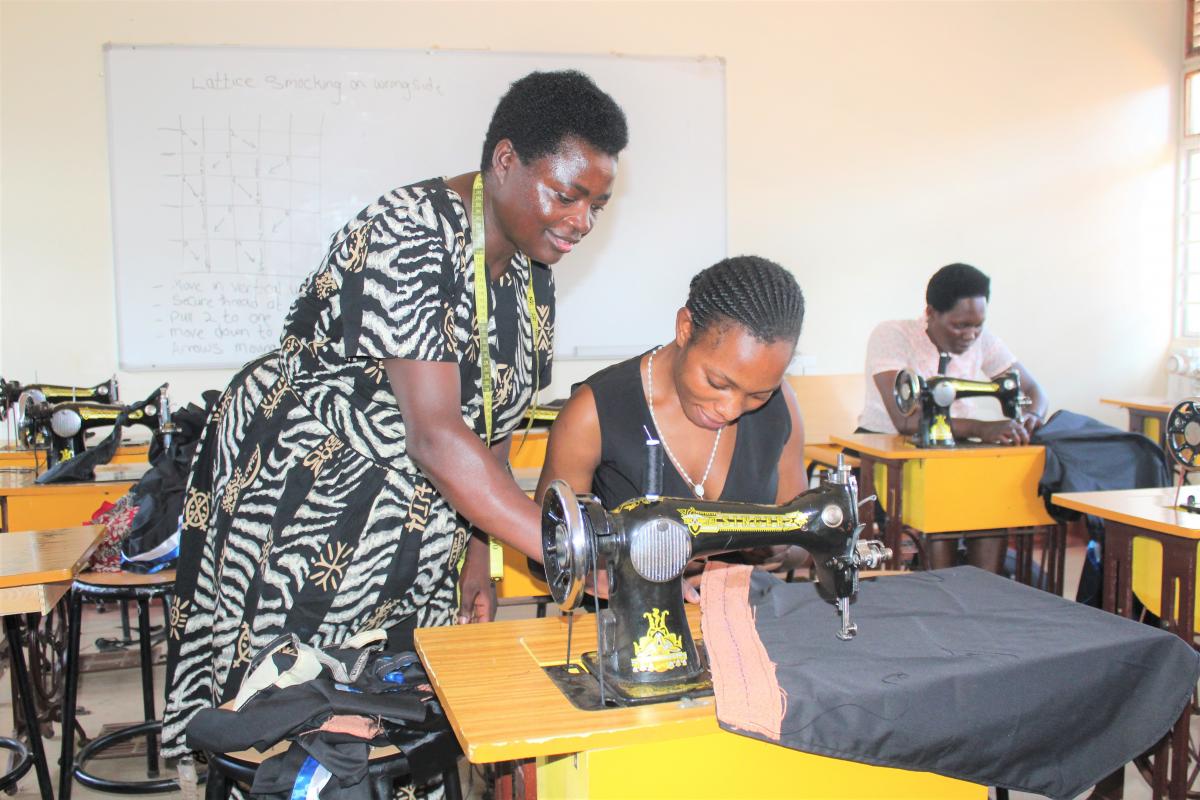Rechercher
Affichage de 1740 à 1755 sur 2520 actualités
-
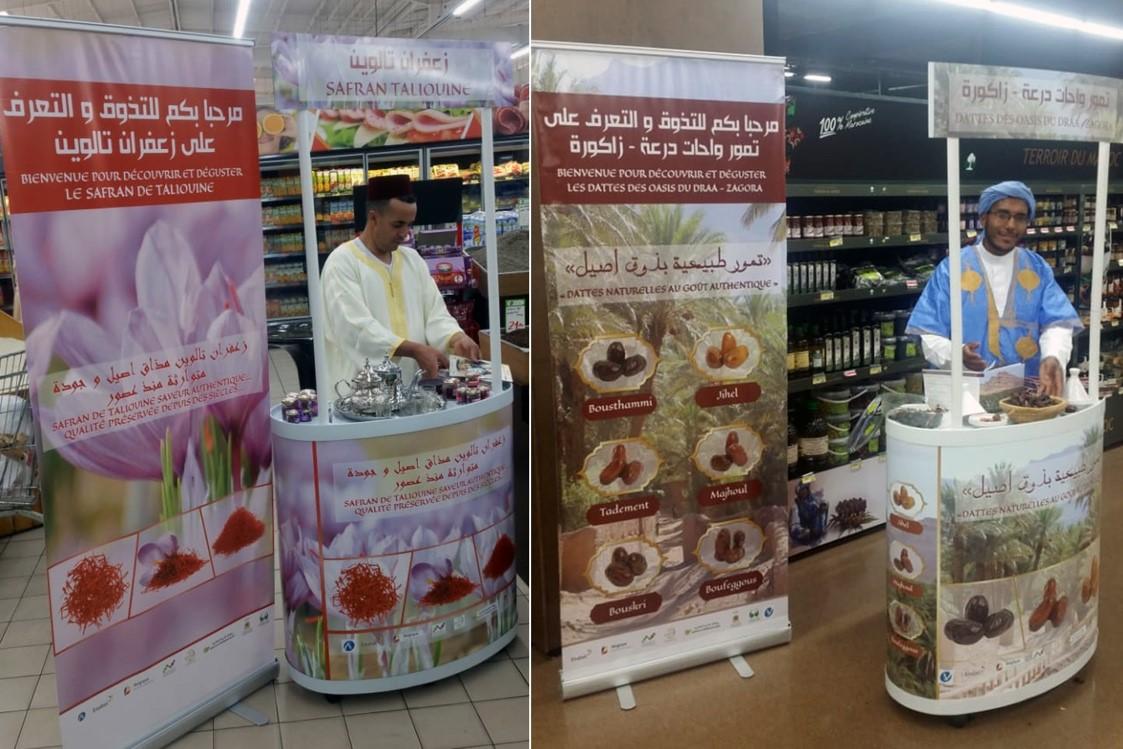
Animations commerciales pour la promotion des dattes des oasis de Drâa-Zagora et du safran de Taliouine
Meriem HILALI | 01/07/2019
Dans le cadre du Projet de Développement des Filières du Safran et du Palmier Dattier dans les régions Souss-Massa et Drâa-Tafilalet (PDFSD), Enabel-Agence belge de développement et ses partenaires, l’Office Régional de Mise en Valeur Agricole de Ouarzazate (ORMVAO) et l’Office National du Conseil Agricole (ONCA), ont organisé des animations commerciales entre le 26 avril et le 30 juin 2019 dans les magasins Asswak Assalam, Label’Vie, et Marjane de plusieurs grandes villes du royaume (Tanger, Tétouan, Al Hoceima, Nador, Berkane, Taza, Larache, Rabat, Temara, Mohammedia, Casablanca, El Jadida, Marrakech et Agadir). Les producteurs représentants des Groupements d’Intérêt Économique (GIE) ont bénéficié d’un coaching pour mener à bien l’opération (aspects organisationnels, argumentaire et techniques de vente). Accompagnés d’animateurs commerciaux professionnels, ils sont allés à la rencontre des consommateurs urbains pour promouvoir les modes de production naturels, la qualité et les vertus nutritionnelles des dattes des oasis de Drâa-Zagora et du safran de Taliouine. Cette approche marketing, qui a stratégiquement été lancée à l’approche du mois de Ramadan, a rencontré un franc succès auprès des clients des grandes et moyennes surfaces.
-
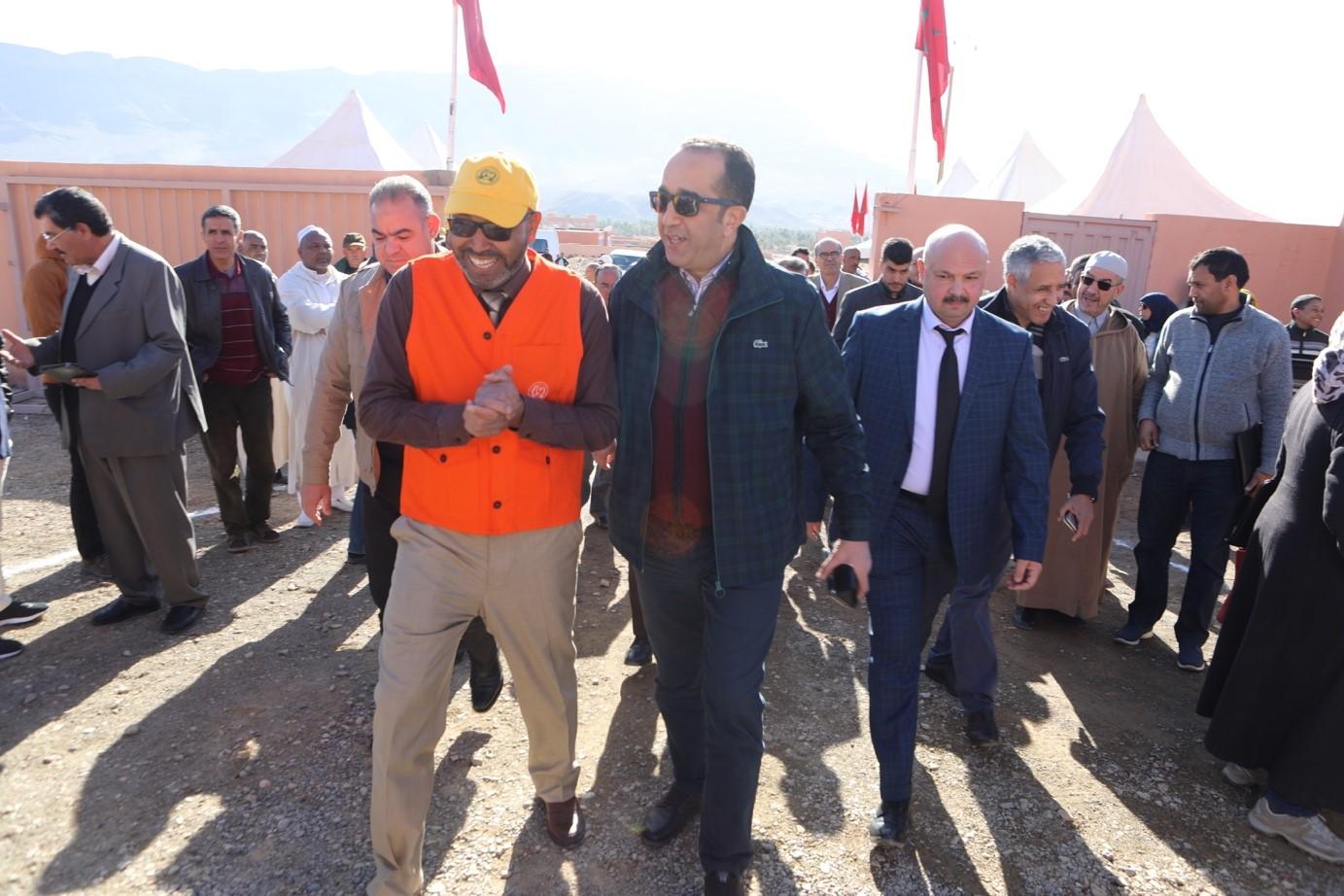
Journée portes ouvertes sur les oasis de Drâa
Meriem HILALI | 01/07/2019
Une journée portes ouvertes sur les oasis de Drâa a été organisée le 09 février 2019, dans le cadre des recommandations pour l’orientation stratégique du PDFSD sur le positionnement de douze variétés de dattes de la zone de l’ORMVAO. La stratégie de promotion des dattes repose sur la communication autour du système de production oasien et du processus qualité assuré par les unités de stockage et de valorisation, lesquelles sont gérées par des Groupements d’Intérêt Economique (GIE). Ainsi, les commerçants professionnels de dattes (grandes et moyennes surfaces et grossistes) et les représentants des administrations concernées (collectivités, ministère et chambres de l’agriculture, directions régionales, provinces, office régionaux de Ouarzazate et de Tafilalet, etc.) se sont rendus sur le terrain pour découvrir les modes de production naturels des oasis et visiter les unités de valorisation. Ils ont ainsi pu se rendre compte que le regroupement des petits producteurs en coopératives et GIE permet de garantir la qualité des dattes de la vallée de Drâa grâce aux bonnes pratiques techniques et sanitaires et ainsi d’améliorer les conditions de vie des agriculteurs.
-
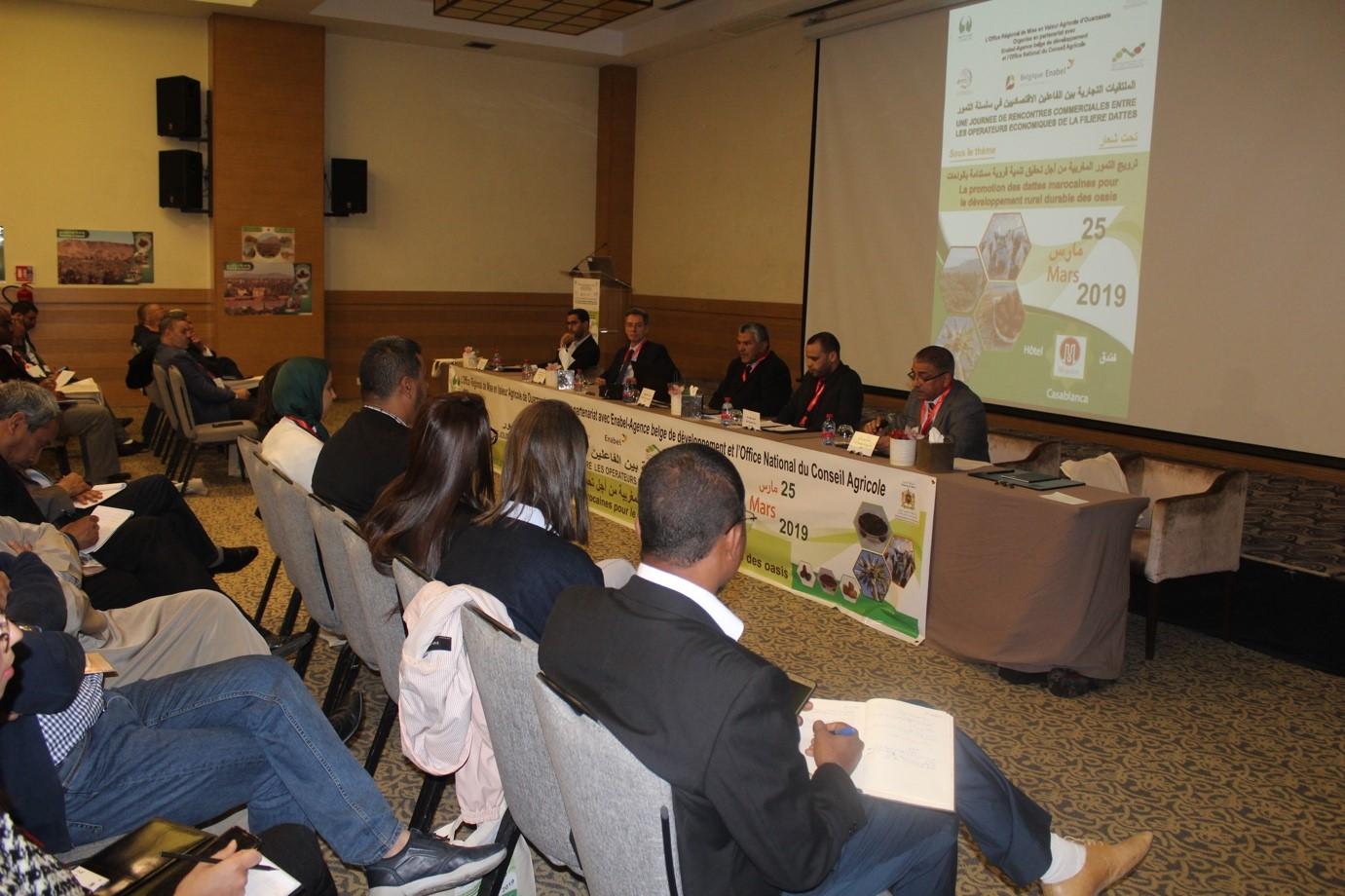
Journée de rencontres commerciales entre les acteurs économiques de la filière du palmier dattier
Meriem HILALI | 01/07/2019
L’Office Régional de Mise en Valeur Agricole de Ouarzazate (ORMVAO), en partenariat avec Enabel-Agence belge de développement et l’Office National du Conseil Agricole (ONCA), a organisé une deuxième journée de rencontres commerciales entre les Groupements d’Intérêt Économique (GIE) Dattes, les GIE Safran et les professionnels des circuits commerciaux sur le thème : « la promotion des dattes marocaines pour un développement rural durable des oasis ». Cette rencontre s’inscrit dans le cadre de la mise en place d’une stratégie marketing pour promouvoir les dattes marocaines et permettre aux opérateurs économiques de la zone, particulièrement les coopératives et GIE, d’accéder au marché national. L’objectif principal de la journée était de renforcer le dialogue entre les professionnels de la filière du palmier dattier. Ainsi, en amont de la filière, les GIE ont pu mettre en avant les points forts de leur mode de production, leur processus qualité et être à l’écoute des exigences du marché. En aval, les acheteurs professionnels ont reçu des informations précises sur les différentes variétés de dattes marocaines et leur appréciation commerciale.
-
LE PADP AU SERVICE DE LA TRANSFUSION SANGUINE
Grâce MALI FAIDA | 14/06/2019
Le Programme Santé soutien l'action du Ministère de la Santé via le Programme d'Appui aux Divisions Provinciales de la santé (PADP).Le PADP a pour ce faire apporté son appui au Centre Provincial de Transfusion Sanguine (CPTS) de Gemena dans le #SudUbangi notamment dans : - Le réaménagement des quelques locaux du laboratoire provincial devant servir de salle de collecte et bureau de la coordination du CPTS;- La dotation en mobiliers & fournitures pour l'installation du bureau;- L'appui au renforcement de capacité des prestataires de trois zone de santé (Gemena, Bwamanda et Tandala) à Budjala sur la question de la chaîne de transfusion sécurisée;- L'appui à la cérémonie de lancement officiel des activités du CPTS de Gemena.Le programme a aussi appuyé financièrement l’installation de frigos solaires pour des zones de santé dans la #Tshopo, destinés à la conservation du sang prélevé à des fins de transfusion.Toutes ces actions sont mise en oeuvre afin que les CPTS disposent de moyens adaptés qui garantissent la disponibilité d'un sang sain et sécurisé.
-
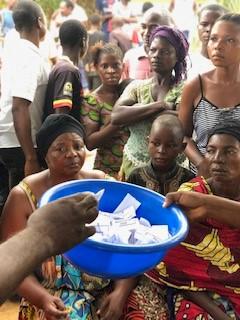
LES FEMMES A L’ASSAUT DES ASUREP
Grâce MALI FAIDA | 12/06/2019
Les femmes représentent encore trop souvent un groupe discriminé et défavorisé par rapport aux hommes.C’est dans ce cadre que l’orientation relative à la coopération au développement adopte comme principe de base l'intégration de la dimension du genre de façon transversale et directe dans toutes les interventions.Le nouveau contrat de gestion d’Enabel s’engage à respecter les lois et conventions en matière de genre, de diversité et d’égalité des chances.Dans ce contexte le ProgEau accentue ses actions sur l’intégration de la dimension genre afin d’assurer le renforcement de l’égalité entre les hommes et les femmes, et l’autonomisation des femmes. Le ProgEau privilégie une approche participative visant l’autonomie et l’autodétermination des populations et volontairement pour les femmes. Permettre aux femmes d’améliorer leur situation, c’est permettre l’amélioration de la situation des familles, de la communauté et de valoriser l’égalité et les valeurs que les femmes apportent.Au foyer, la gestion de l’eau, ce sont les femmes qui s’en occupent : elles vont aux bornes fontaines et utilisent l’eau dans la vie quotidienne.Dans les ProgEau, les femmes nécessairement se doivent d’être présentes dans les comités de gestion des ASUREP (Associations des Usagers des Réseaux d’Eau Potable). Et depuis le mois de mai 2019, le ProgEau supervise et accompagne le processus des élections des membres délégués des ASUREP des quartiers au Maniema et au Sud Kivu.Les femmes sont venues volontairement et activement participer au processus d’élection afin de s’impliquer dans le rôle décisionnel. A ce jour 30 % sont attendues mais c’est déjà au-delà, au Maniema que nous retrouvons les femmes dans le comité de gestion.Ce n’est que tous unis pour le même défi d’amélioration de la communauté que hommes et femmes actifs inscriront le changement dans la gestion ; Plus de redevabilité, plus de transparence.
-
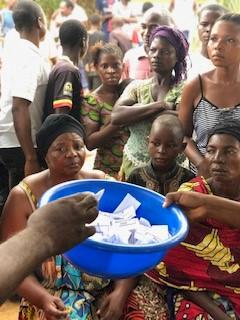
LES FEMMES A L’ASSAUT DES ASUREP
Grâce MALI FAIDA | 12/06/2019
Les femmes représentent encore trop souvent un groupe discriminé et défavorisé par rapport aux hommes.C’est dans ce cadre que l’orientation relative à la coopération au développement adopte comme principe de base l'intégration de la dimension du genre de façon transversale et directe dans toutes les interventions.Le nouveau contrat de gestion d’Enabel s’engage à respecter les lois et conventions en matière de genre, de diversité et d’égalité des chances.Dans ce contexte le ProgEau accentue ses actions sur l’intégration de la dimension genre afin d’assurer le renforcement de l’égalité entre les hommes et les femmes, et l’autonomisation des femmes. Le ProgEau privilégie une approche participative visant l’autonomie et l’autodétermination des populations et volontairement pour les femmes. Permettre aux femmes d’améliorer leur situation, c’est permettre l’amélioration de la situation des familles, de la communauté et de valoriser l’égalité et les valeurs que les femmes apportent.Au foyer, la gestion de l’eau, ce sont les femmes qui s’en occupent : elles vont aux bornes fontaines et utilisent l’eau dans la vie quotidienne.Dans les ProgEau, les femmes nécessairement se doivent d’être présentes dans les comités de gestion des ASUREP (Associations des Usagers des Réseaux d’Eau Potable). Et depuis le mois de mai 2019, le ProgEau supervise et accompagne le processus des élections des membres délégués des ASUREP des quartiers au Maniema et au Sud Kivu.Les femmes sont venues volontairement et activement participer au processus d’élection afin de s’impliquer dans le rôle décisionnel. A ce jour 30 % sont attendues mais c’est déjà au-delà, au Maniema que nous retrouvons les femmes dans le comité de gestion.Ce n’est que tous unis pour le même défi d’amélioration de la communauté que hommes et femmes actifs inscriront le changement dans la gestion ; Plus de redevabilité, plus de transparence.
-
Tailoring and Garmentry training for department staff improves skills transfer
Rachael AYEBALE | 12/06/2019
National Instructors College Abilonino is a one of the vocational training institutions in Uganda located in the northern part of Uganda.Among the many vocational trainings offered at the college is a course in tailoring and garment design.The tailoring and garment department however was faced with several challenges that hindered smooth transfer of learning to the students.The workshop lay out was poor, they had no knowledge on decorative designing and yet they had the equipment, identifying fabrics and material types was a challenge, resource mobilization from products of the class was no existent but rather a pile of product was kept in the class to gather dust.That was until the Support to the Development of Human resources project facilitated a needs assessment exercise at the facility aimed at identifying the key skills gaps that then the project would support to bridge.These gaps and many others in various departments stood out and thus a training was then tailored and administrated to the staff of the tailoring and garments department.The situation has since been turned around in this department.A walk into the tailoring room and you see a symmetrical layout of the workshop. Machines of the same kind are placed in one space to ensure smooth transition from one stage of production to the other.“Each group working on a particular phase of a product are in one space,” Teddy Kitibwa, a senior lecturer in the department mentions.“We have also sold all our products. We use to have piles and piles of products and we didn’t know what to do with them. Now almost everything is gone.” Teddy adds.“You can imagine, we had equipment for graphic designing but we didn’t know how to use them. Thanks to the training, we now have the knowledge and we are now even teaching our students graphic designing on fabrics,” teddy says“We also now can easily identify which fabric is what, what fabric is suitable for what. This has greatly helped us make standard products that can be bought.” She adds.The resources collected from sales are being used to purchase more equipment, and support students in the class who may need any financial support. This motivates the students knowing in case of any problem, there is an emergency fund that can support them to complete their course.“We are really greatful for this training. The trainer was very knowledgeable and has helped us a lot to structure our department better. If only she would come again.” Teddy concludes
-

Reportage adéquation formation-emploi - Enabel Burundi
Aimé GIRUKWIGOMBA | 10/06/2019
Projet ACFPT : "Une réponse à la formation et l'insertion professionnelle des jeunes au Burundi".
-

Clearing the Dust: How Libraries are Changing in National Teachers' Colleges
Dorothy KYAMAZIMA | 06/06/2019
What is the future of libraries in this digital age? As technology continues to evolve and spur innovation, libraries too are changing. They are adapting to accommodate new applications of technology for learning, research and information. Meet Susan Owomugisha, a librarian from National Teachers’ College Kabale, sharing how technology is transforming libraries and making them more relevant. This is part of Enabel’s efforts to improve access and use of information in the colleges through user-friendly libraries by improving the management of libraries using KOHA, ensuring availability of equipment in the libraries and other continuous professional development trainings for the Librarians and their support teams.
-
DE LA “RUE” VERS L’EMPLOI
Grâce MALI FAIDA | 04/06/2019
Dans le cadre du partenariat avec « Dynamo International » et « AMO/CATSR » grâce à l’appui d’Enabel/EDUKOR en infrastructures et équipements, Il y a trois mois démarrait le 1er module de « Coupe-Couture » destiné à un groupe de 15 jeunes filles issues de la « rue ». Après quelques semaines d’apprentissage elles nous présentent leurs premières confections : tablier, chemise d’uniforme pour enfant, boubou, robe pour fillette, culotte, le drap pour bébé, Nous encourageons ces jeunes filles dans leurs parcours d’intégration socio professionnelle visant l’emploi en fin de trajet d’ici quelques mois en créant leur propre « AGR » (activités génératrices de revenus) équipées de leurs « Kit d’Insertion » aux bénéfices des communautés. MICHEL PUJANA RESPONSABLE EDUKOR
-
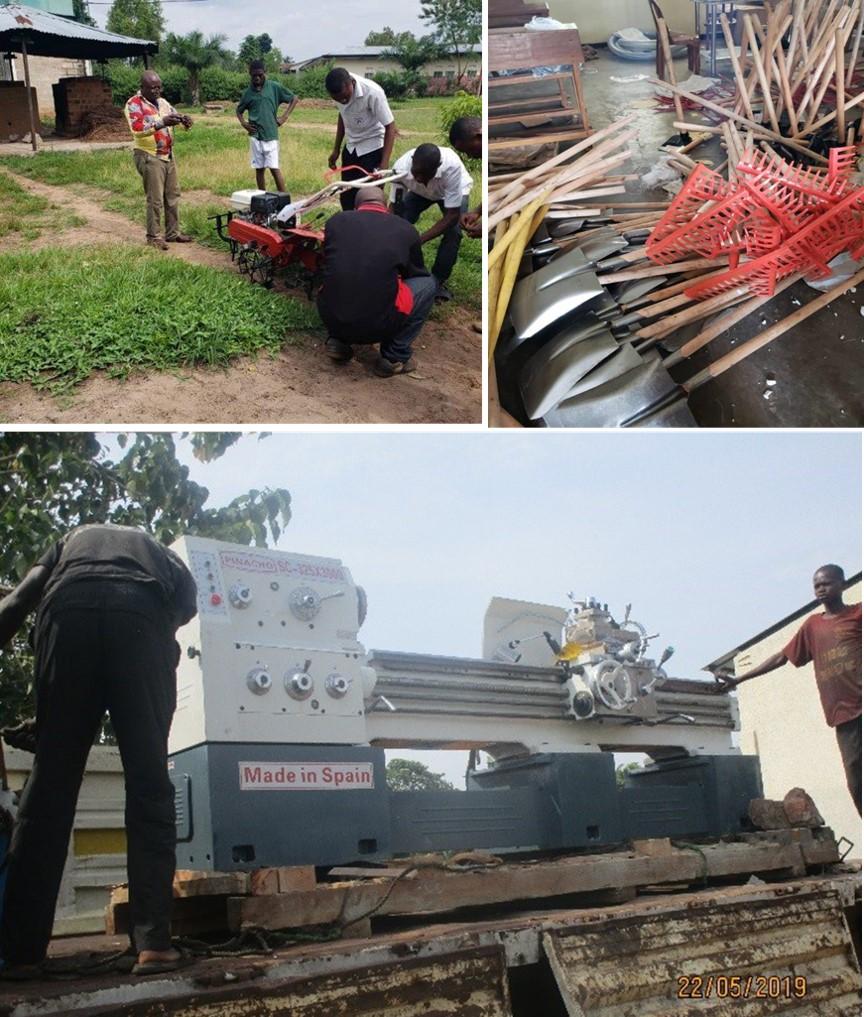
ENABEL EQUIPE 5 CENTRES D’APPLICATION AU KASAÏ ORIENTAL ET LA LOMAMI
Grâce MALI FAIDA | 04/06/2019
Dans le cadre de l’amélioration de la qualité de l’ETFP en RDC, Enabel au travers de son programme EDUKOR au Kasaï Oriental et la Lomami appuie 5 Centres d’Application dans les filières de l’agriculture générale/vétérinaire/transformation alimentaire, la mécanique générale, la menuiserie, la mécanique moto et l’imprimerie.Après avoir bénéficié de renforcement des capacités pour leurs enseignants, de constructions et réhabilitations de leurs infrastructures, de la mise en œuvre des approches innovantes telles que les « AGR » (activités génératrices de revenus), de la « Formation en Alternance » pour plus de 230 jeunes apprenants par an au sein d’entreprises locales et de l’accompagnement des sortants dans le cadre de projets d’insertion professionnelle visant des emplois durables et dignes une nouvelle phase s’ouvre aux jeunes avec la réception et l’installation des équipements et outillages pour les ateliers d’apprentissage technique métiers dans les 5 CDA.Ces nouveaux équipements de dernière génération permettront aux apprenants de parfaire l’acquisition des compétences nécessaires pour répondre aux besoins du marché de l’emploi et envisager également de se lancer dans l’auto emploi au travers de l’entrepreneuriat.Grâce à ces différents appuis apportés par Enabel une main d’œuvre qualifiée sera mise au service des communautés et provinces en vue accroître le développement socio économique des régions les plus fragilisées créant de l’emploi pour les jeunes sortants de l’ETFP.MICHEL PUJANARESPONSABLE EDUKOR
-
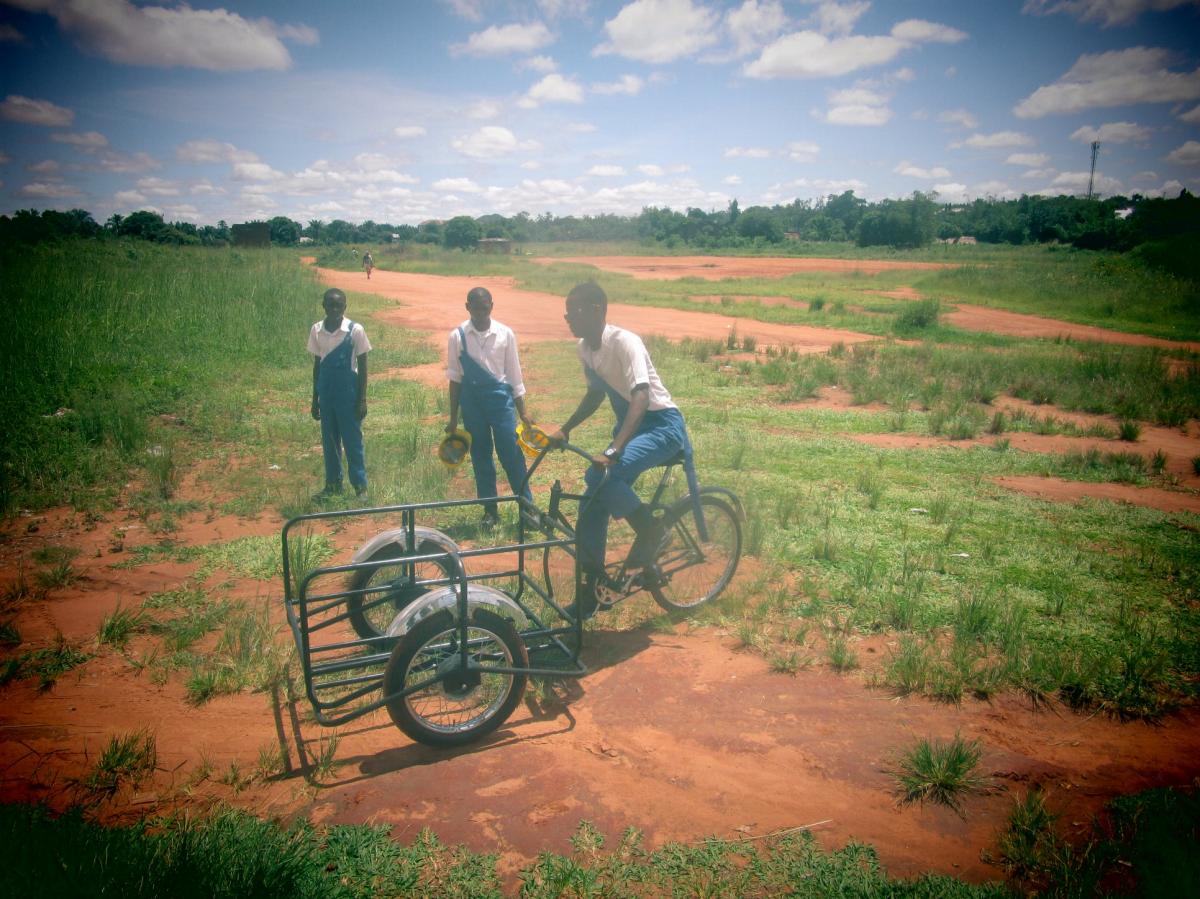
LA FILIÈRE MÉCANIQUE GÉNÉRALE INAUGURE SON NOUVEAU TRICYCLE PORTEUR
Grâce MALI FAIDA | 21/05/2019
EDUKOR lançait en début Mars, un défi innovant aux jeunes apprenants de la filière « mécanique générale » du Centre d’Application Technique de Mbuji Maii. Les jeunes ont construit ce tricycle porteur de « A à Z » sur base d’un simple schéma, devant faire appel à leurs compétences acquises au CDA, la réflexion, le travail en équipe, l’imagination affrontant les obstacles/difficultés, mais en trouvant toujours ensemble les solutions adaptées. Ce « Prototype » sera testé par plusieurs transporteurs/vélo (de braises et autres marchandises) afin de valider son caractère fonctionnel. L’étape suivante consistera à proposer aux associations de transporteurs de vélos du Kasaï Oriental, la possibilité d’acquérir ce tricycle . Ce qui leur permettra de réduire la pénibilité de leur métier en facilitant la conduite et en autorisant une capacité de charge additionnelle. Les jeunes du CDA réfléchissent déjà à d’autres projets innovants qui bénéficieront à leur communauté.
-
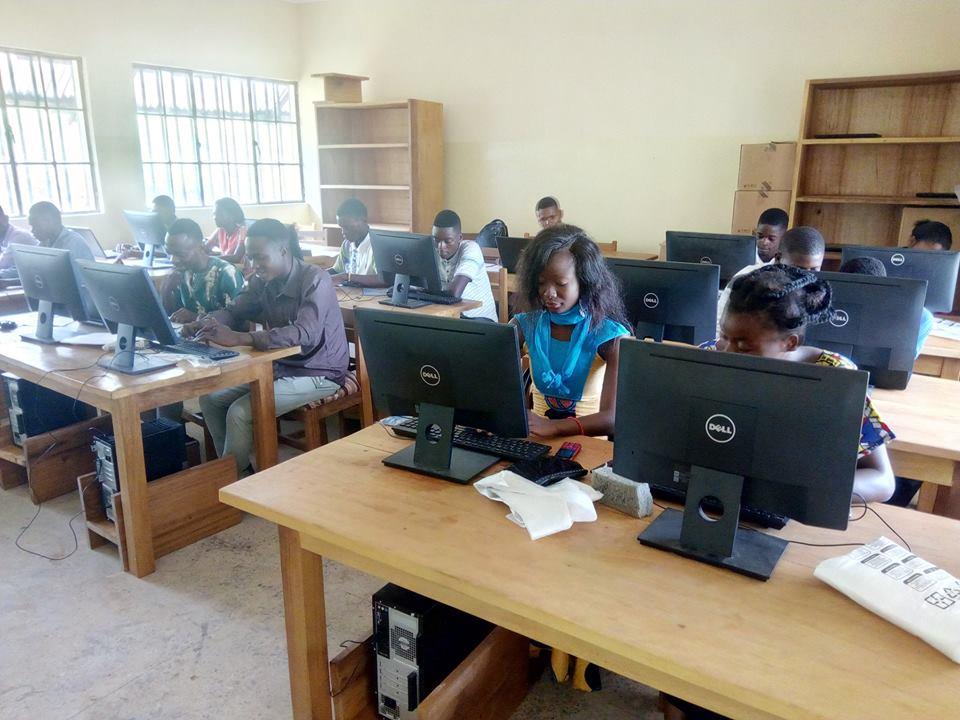
DÉBUT DE LA FORMATION EN IMPRIMERIE A MBUJI-MAYI
Grâce MALI FAIDA | 21/05/2019
Un groupe de 25 filles et garçons en rupture scolaire, a démarré en janvier une formation d'un an en imprimerie au centre DON-BOSCO à Mbuji-Mayi.Doté d'équipements dernier cri, ce dispositif modulaire devrait permettre à ces jeunes de réussir leur insertion professionnelle via l'auto emploi. Les premières commandes de cartes de visites et d'affiches viennent de tomber.
-
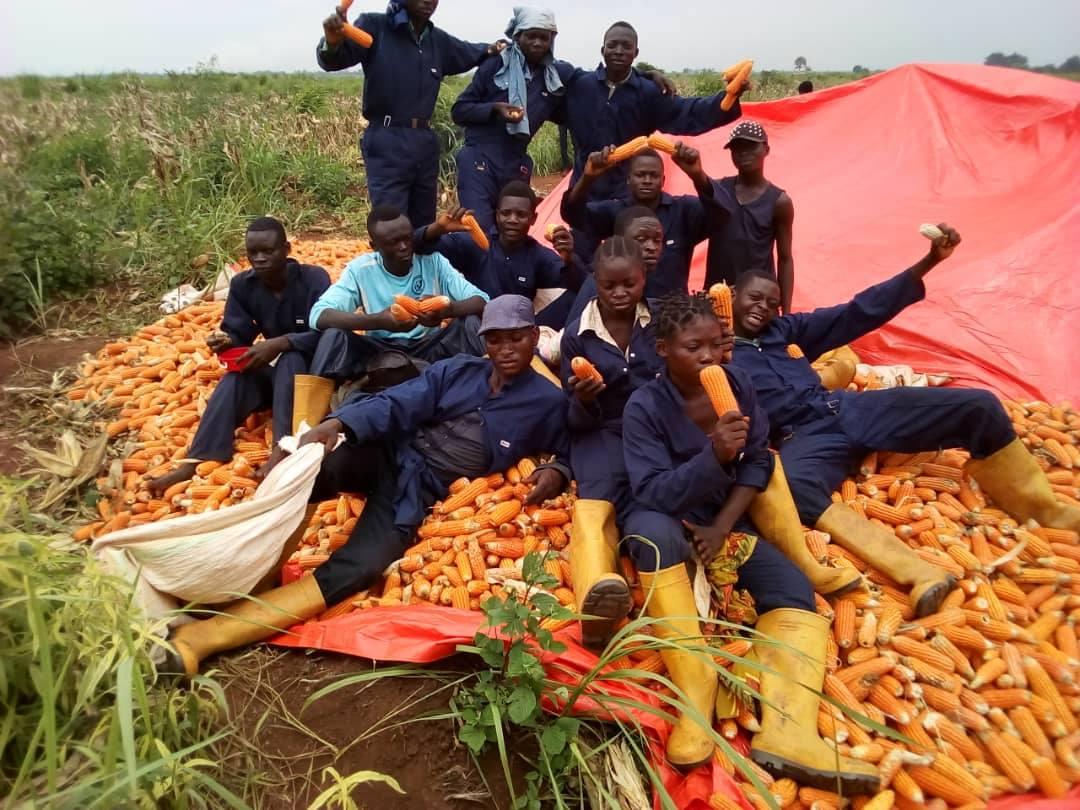
LES JEUNES DE LA FILIÈRE AGRICULTURE DÉBUTENT LEUR ACTIVITÉ
Grâce MALI FAIDA | 21/05/2019
NGANDAJIKA: 36 jeunes lauréats issus de la filière technique agriculture, soutenus dans leur insertion par EDUKOR - Enabel, se sont constitués en association sous activités génératrices de revenus. Ils viennent de finaliser, en ce 20 Mars 2019, une première récolte de 8 Tonnes de maïs et ont commencé la commercialisation de ce produit.
-
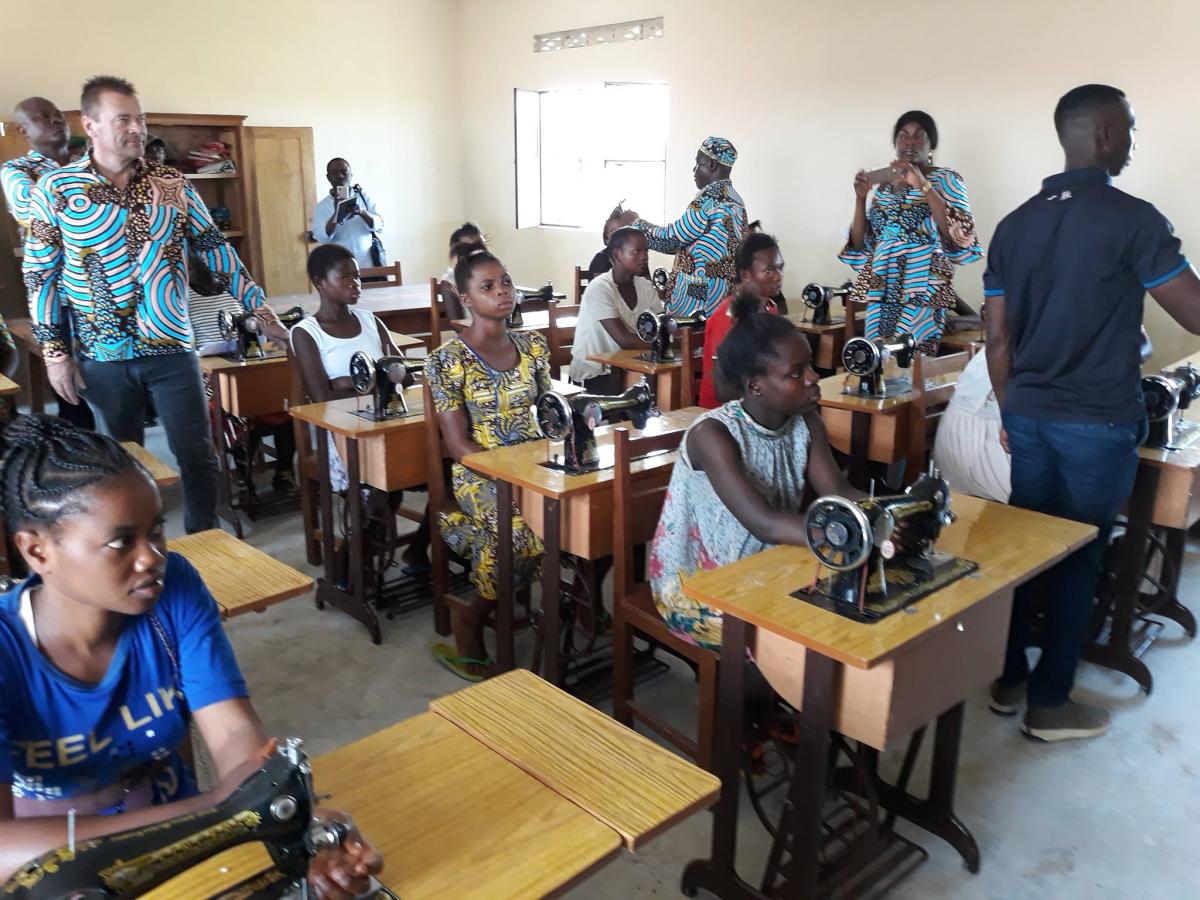
INAUGURATION DU CENTRE DE FORMATION DES JEUNES FILLES EN SITUATION DE RUE
Grâce MALI FAIDA | 21/05/2019
Le 12 Mars 2019, durant le mois de la Femme, a eu lieu l’inauguration et la remise officielle en présence des autorités locales et des partenaires du « Centre de formation des jeunes filles en situation de rue » dans la commune de Bipemba au Kasaï Oriental, résultat du partenariat impulsé par Enabel, via son intervention EDUKOR avec Dynamo International (ONG belge) et CATSR (ONG congolaise).L’objectif est de permettre au CATSR (Comité d’Appui au Travail Social de Rue) d’offrir à ses bénéficiaires, garçons et filles de la rue, la possibilité de se former au travers de parcours d’intégration dans différents métiers.EDUKOR a doté le partenaire d’un bâtiment, de sanitaires, d’un système en énergie solaire, de mobilier de bureau, d’équipements et consommables pour initier, avec un premier groupe de 15 jeunes filles le premier module de formation en « Coupe et Couture » visant l’insertion socio professionnelle post formation.
